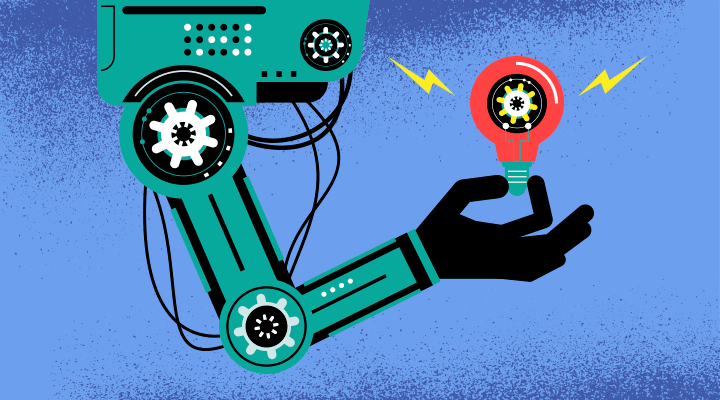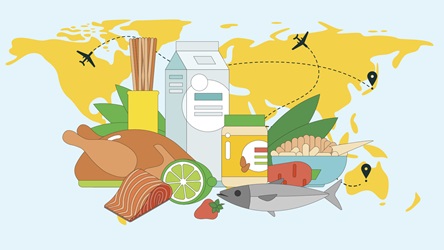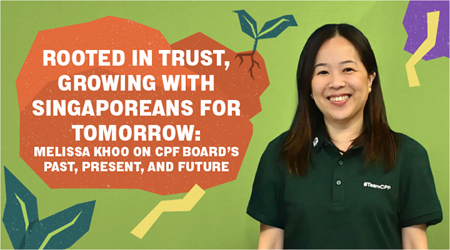Singapore Agenda In Focus: Innovation

Three Key Types of Innovation Companies can Engage In
- Efficiency innovations enable companies to do more with fewer resources, e.g., through adopting technology and automation;
- Sustaining innovations improve on existing products and services to provide better performance and/or present them in new forms
- Market-creating innovations serve people for whom either no product existed or existing products were inaccessible.
Investing In Innovation For Singapore’s Firms And Workers
Research, innovation and enterprise are cornerstones of the national strategy to build Singapore’s economy.
With technological disruptions and widespread digital adoption, economic value is increasingly created by innovation. High growth rates and maturing consumer end-markets in Asia also mean opportunities abound for innovating and developing solutions that address the distinct needs of Asian consumers.
We want to empower our companies to generate new business growth and improve their productivity – with globally competitive products, services and business models. To do so, we need a critical mass of firms that invest in various types of innovation as well as an ecosystem that supports innovation and enterprise (I&E) talent.
During the COVID-19 crisis, government agencies and private sector firms have demonstrated resilience by coming up with many multi-faceted ways to quickly confront new situations.

Innovations That Have Emerged
Improving productivity with digital tools and tech.
To reduce manpower-intensive activities in government and industries
Within the Public Service, many agencies have implemented split team and telecommuting arrangements. Face-to-face meetings have gone virtual with digital tools such as Skype for Business, so that work can proceed as usual. Even within the wider public sector, we see similar efficiency innovations. For example, in Alexandra Hospital, robots deliver meals and medicines, help with cleaning and chat with patients in isolation wards.
New digital applications have enabled public officers to provide a wide range of public services more efficiently. Many functions once done manually are now automated with the adoption of technology.
GovTech tools to beat COVID-19
In response to the COVID-19 outbreak, the Singapore Government Technology Agency (GovTech) made use of several digital tools to help both citizens and public officers safeguard public health.
Feel unwell? You can use DigiMC to get a digital MC, which can be shared via a link with your employer, removing the need for paper submissions in-person.
In the area of communications, Postman is a mass messaging system for public officers to send messages to many recipients at once. This is what powers the Gov.sg Whatsapp channel.
For temperature taking, health declarations and social assistance schemes such as the Temporary Relief Fund and Solidarity Budget Payout, FormSG enables public officers to set up digital systems in minutes to collect verified information securely. 1,000 COVID forms have been deployed that have been submitted over 18 million times.
To lend authority to content shared and stem the flow of fake news, Go.gov.sg enables officers to share online content or files via official gov.sg links in a few clicks. 40,000 COVID links have been generated and accessed more than 35 million times.
Emerging from a January 2020 hackathon by GovTech’s Open Government Products, RedeemSG makes it easy for agencies to track the distribution of goods, vouchers and tickets. A mobile app allows an NRIC or voucher QR code to be scanned for redeeming rewards, and an admin portal lets organisers see and download redemption reports.
RedeemSG is being used to track the redemption of several millions of masks in the upcoming rounds of mask distribution to all Singapore residents, via 800 collection points (CCs and RCs) and vending machines. It is also being used to track about 150,000 Ramadan meals to needy families and healthcare workers over the Ramadan month as part of the #SGUnited Buka Puasa initiative.

Adapting Quickly to Changing Circumstances
To find new ways to continue delivering services and products
The pandemic has accelerated business model transformation, especially among small businesses:
- Fitness and boutique gyms, as well as dance and yoga studios, have pivoted to hosting paid online classes to expand their reach. This allows their clients to work out in the comfort of their homes while adhering to social distancing measures.
- With entertainment venues being closed, many bars have expanded their offerings to include home deliveries of cocktails, wines and other spirits.
- Many in the events industry, such as florists and photographers, have started providing more diversified services (e.g., virtual workshops, a la carte deliveries) to reach out to new clientele. Photographer Nicky Loh has been conducting virtual photoshoots over Zoom, directing his clients how to pose and taking photos with his camera on the other side of the screen.
While not all of these moves may be profit-making in the near-term, they help to capture new consumer markets and create brand awareness and loyalty in the long haul.
The government has also changed some of the ways it operates. For instance, consultations for some Central Provident Fund services and many applications for financial aid, such as for the Temporary Relief Fund, are available online. Trials for telemedicine services and the coverage of such claims are also taking place: the Ministry of Health has a regulatory sandbox initiative to explore new technologies and services in partnership with the healthcare industry.

Creating New Applications And Products
To serve new market needs
Many local companies and researchers have stepped up to address new market needs that have emerged.
Market need: Lack of face masks
Gill Mask by Mdesign Solutions – An airtight, reusable face mask that can be fitted with a filter made from one-sixth of the material used in a standard surgical mask. Inspired by scuba-diving masks.
Market need: COVID-19 test kits
COVID-19 rapid test kit by A*STAR’s NanoBio Lab – This rapid test kit can deliver results in as little as five minutes by picking out the genetic material of the virus in a patient’s secretions.
Market need: Efficient contact tracing
TraceTogether by GovTech – Built in an eight-week sprint, this is a mobile app that records close encounters between users, using Bluetooth communications. It was designed to support a community-based approach to assist contact tracers. The technology underpinning this, called BlueTrace, has been published open-source for use by developers around the world.
Market need: Quarantine checks
Homer by GovTech – For those serving a 14-day Stay-Home Notice, GovTech’s location reporting system Homer makes it easy for rostered public officers to check that those under quarantine stay in place.
How you can play a part
The COVID-19 crisis reinforces the value of our investments that support innovation: digital infrastructure, I&E talent, and public sector and enterprise capabilities.
To address the crisis, we also need to revisit the assumptions that underpin many of our plans and policies and update our policy thinking on multiple fronts.
Take, for example, the regulatory flexibility given to taxi and private-hire car drivers to make grocery and food deliveries. The move has helped to address the shortage of delivery slots while providing drivers with interim sources of income.
As the situation evolves, another unanticipated second- and third-order effects may arise, such as new economic opportunities, hidden vulnerabilities and a reconfiguration of the global order and regional landscape. Having a culture of pervasive innovation will go a long way towards helping us to respond effectively to these shifts.
Everyone can innovate
Innovation is not limited to those in a particular line or field of work. Everyone can do their part to develop a culture of pervasive innovation. You can start small and think about innovating day-to-day solutions around you.
Need some ideas? To boost ground-up innovation, the Million Hours Challenge (MHC) focuses on encouraging officers to start creating solutions on a small scale. Get started by reading the MHC submissions received from public officers and agencies on sgdcs.sgnet.gov.sg/sites/PSD-PST/Pages/TTDashboard.aspx (accessible from intranet).
This topic is part of a series of features on the Singapore Agenda, one of the key priorities for the Public Service to Build Our Future, together with Public Sector Transformation and Singapore Together.
Related stories
- POSTED ON
May 20, 2020
- TEXT BY
SGPA
Tuber
- ILLUSTRATION BY
mushroomhead
-
Deep Dive
Strengthening Singapore’s Food Security









